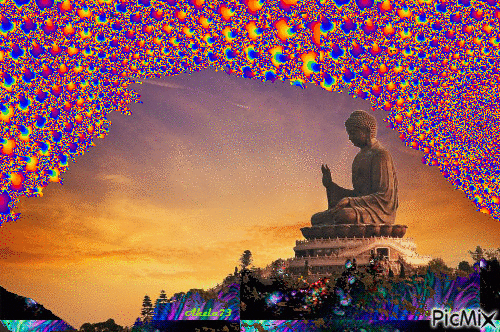
The Moving Portrait: From Holograms to GIFs to Boomerang
Although
video dominates much of the media landscape, the simplicity of the
photograph perseveres. Ironically, throughout much of the history of
photography, photographers (along with editors, designers, and
publishers) have continually explored limited motion. The portrait, in particular, has been a ripe target for the integration of motion. Unlike the video portrait, the moving portrait is typically shorter and length, often with an endless loop – perhaps inspired by the animated GIF.
Motion
brings about a level of dynamism, and can induce emotion in a way that a
static image cannot. Throughout much of the past 50 years, technology
has helped influence the direction of the moving portrait.
***
The
lack of a screen hasn’t prevented publishers from trying to simulate
movement in print. Two major technologies have been utilized to create
the moving portrait: holograms and lenticular printing.
HOLOGRAMS
In 1984, National Geographic
released its first holographic cover, a bald eagle, to showcase the
nascent technology. Altering the viewing angle of the cover gave readers
a limited 3D perspective.
The
magazine followed up with a larger hologram of a skull in 1985 and a
full holographic cover of a globe in 1988. The covers provided
relatively high fidelity movable images in the hands of consumers.
More recently, Empire magazine published a full holographic cover for a Star Wars: The Last Jedi subscriber cover.

LENTICULAR PRINTING
Lenticular
printing uses lenses to change an image based on the viewing angle.
Although the technology has been around for over 100 years, lenticular
printing became popular starting in the 1950s when companies like
Vari-Vue produced consumer products like trading cards.
Artist Rob Munday visited fashion designer and icon Karl Lagerfeld to produce a series of 50 images, some of which formed the lenticular cover for AnOther magazine’s 15th anniversary issue in 2016.

Wired UK partnered with Sky TV to create a full-wrap lenticular cover in 2016 promoting the product launch of Sky Q.

***
The
ubiquity of internet-connected devices on our desks and in our pockets
has been a critical piece of the visual age. Aided by rapid
technological advances for capture and display, the popularity of the
moving portrait has been fueled by the fact that anyone can create one.
ANIMATED GIF
Early
animated GIFs were small and cartoonish in nature with restricted color
palettes. Limited bandwidth from dial-up modems imposed practical
limits to how the technology could be used. But GIFs provided motion
(e.g. a flag waving in the wind) at a time when the rest of the web was
dominated by text against a gray background.
As
video technology progressed, the animated GIF was largely perceived as
an antiquated technology. Yet rather than die, the GIF saw a resurgence
as a part of the lexicon of the Visual Age, even with an 8-bit color
palette. Animated GIFs became popular as visual reactions, leading to
the meme-ification of many well-known video clips.
The
looping nature of the moving portrait has made it popular with comedic
intent. But as the medium has matured, we’ve seen an expansion of the
emotional content.
As a part of a brilliant marketing campaign, Converse converted clips of Stranger Things star Millie Bobby Brown into reaction GIFs and made them freely available for consumers.

Converse
Professional GIF artist Kate Bones combined photos from a 1980s 3D film camera to create stereoscopic GIF portraits from Glastonbury’s NYC Downlow festival. Bones told Marie Claire,
“GIF is an old format going through a renaissance. What’s happening now
is unchartered territory, but I believe GIF is the perfect visual
medium for social media.”

Kate Bones
The New York Times tapped John Yuyi to create a series of moving portraits for a piece appropriately titled “Welcome to the Post-Text Future.”



























